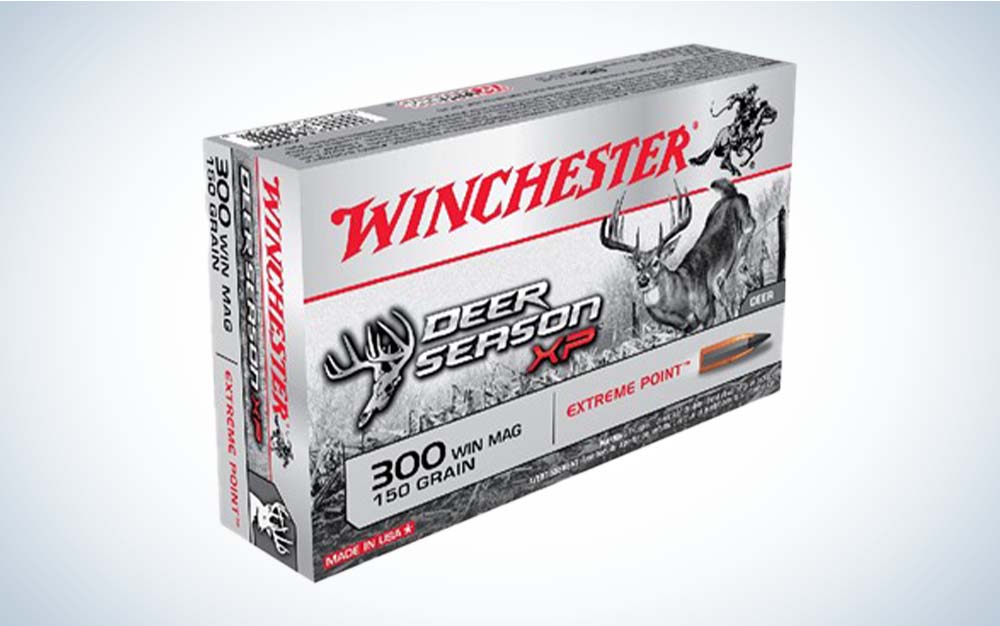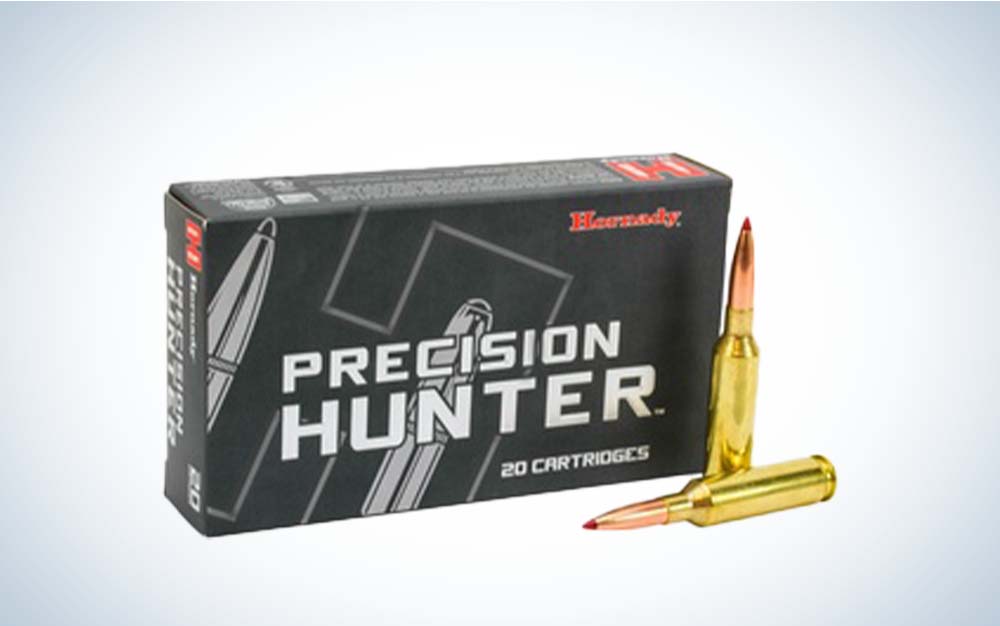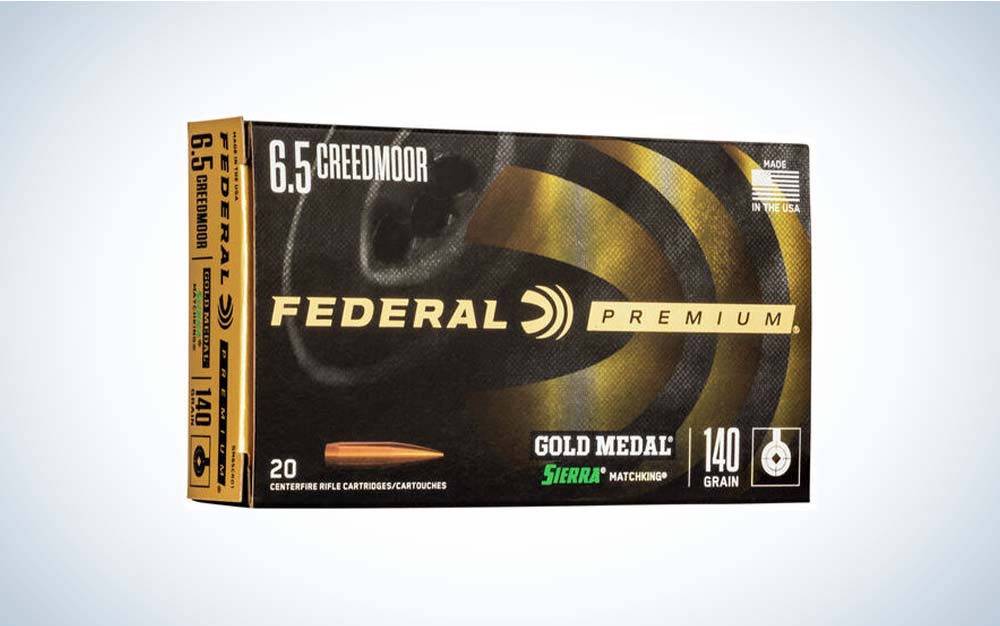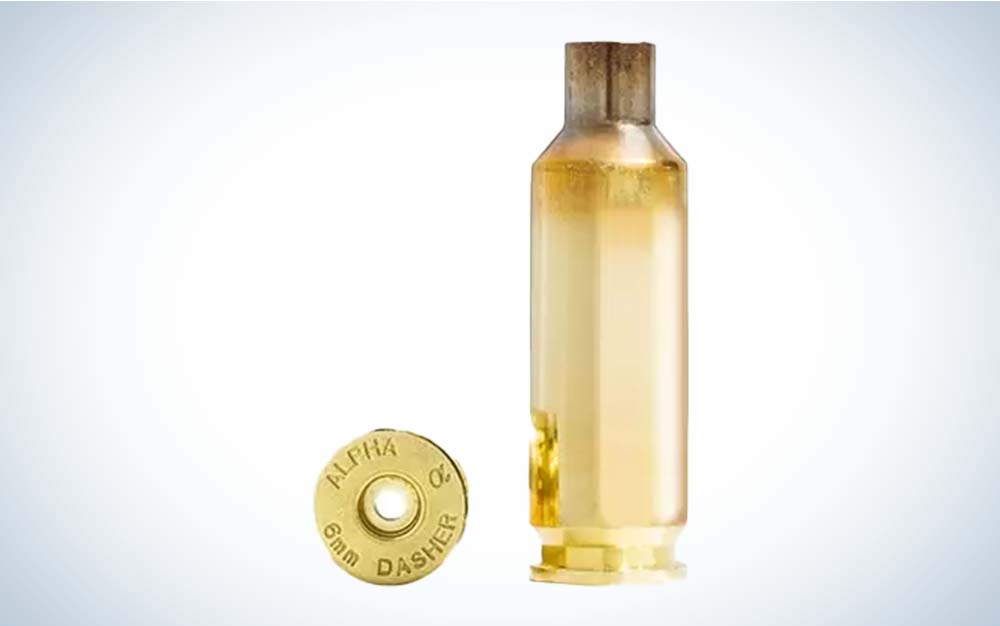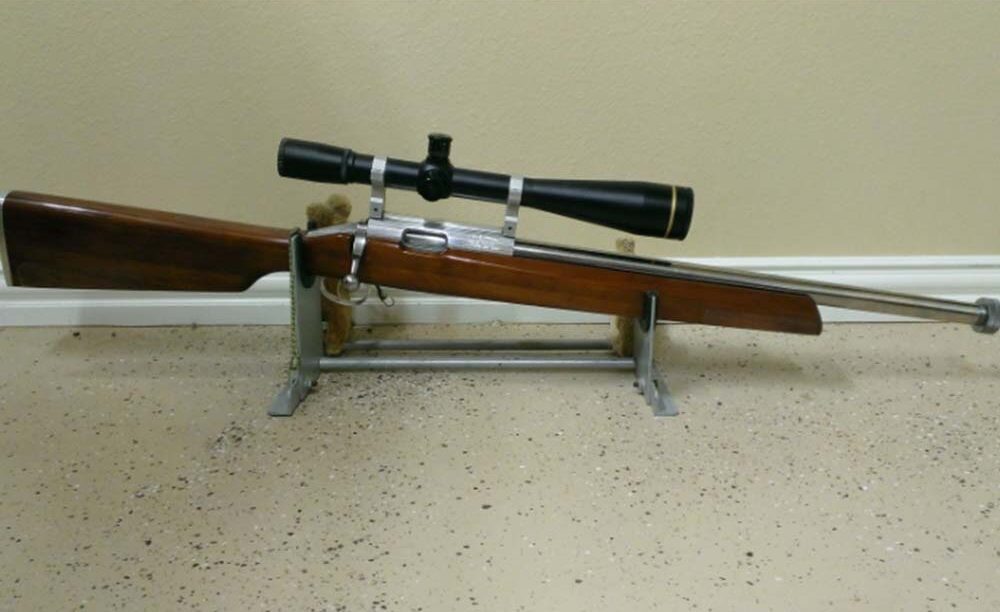We may earn revenue from the products available on this page and participate in affiliate programs. Learn More ›
Updated Mar 21, 2023 1:24 PM
When talking about long-range calibers and their best applications, the immediate question pops up: For what? There is no shortage of amazing cartridges that offer dazzling performance at extended ranges. The fact is rifle shooters have never had it so good. Hardly a week goes by without the introduction of a new product—whether a bullet, a type of gun powder, a riflescope, an electronic gizmo, or what have you—that doesn’t help shooters put projectiles on target with greater precision.
But when you consider the specific task at hand, the field of options narrows. For these various applications, these are my top picks among long-range calibers. (Even though the term “cartridges” is correct, the common usage of “caliber” dictates why this story is called “Best Long-Range Calibers” rather than “Best Long-Range Cartridges.”)
Best Long Range Calibers: Reviews & Recommendations
Best for Hunting: .308 Winchester
Key Features
- Well balanced
- Proven track record
Pros
- Moderate recoil
- Widely available
- Great bullet selection
Cons
- Less forgiving trajectory
- More susceptible to wind
A few years back when I was planning a hunt for blacktails in Oregon I ran through a mental checklist of all the big-game cartridges I could choose from. Even though I love my Creedmoors, my 7mm Rem. Mags., the .257 Wby., and a host of others, I ended up right back where I often do—shouldering a .308 Winchester.
There are a lot of reasons for this. Nostalgia for my earliest days in deer camp. A legacy that inspires confidence. The fact that if the .308 was good enough for our boys in Viet Nam, then it sure as hell is good enough for me.
But putting the emotional draws to the cartridge aside, there are still plenty of pragmatic reasons for the choice. The .308 Win. is the perfect Goldilocks round. It has ample killing power for all but the largest of game, it is easy to shoot well, the cartridge is inherently accurate. Although it isn’t the flattest shooting round, that trait is, ironically, overrated in a long-range round. More important is consistency, and the mild-mannered .308 demonstrates that in spades.
For that blacktail hunt I ended up creating a rifle with the now-defunct Legendary Arms Works with my friend Mike Hudgins. That handy rifle is an excellent expression of the subtle nature of the .308. It can make long cross-canyon shots when needed, yet you can bring it to action in a flash should a buck materialize in front of you in the dense timber.
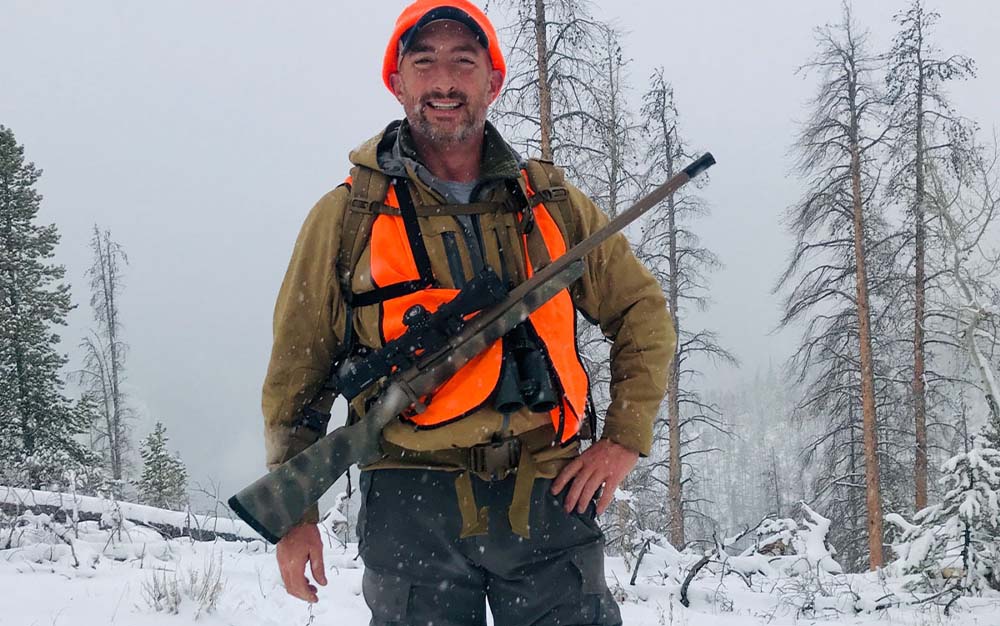
That versatility is what drew Col. Jeff Cooper to the round when he refined his ideas about the scout rifle. Among his requirements were that the cartridge for the rifle should be able to kill a 1,000-pound animal with one shot, that the ammunition should be widely available, that the practical field accuracy of the rifle, which should weigh seven pounds or less with scope and sling and be no longer than 39 inches from butt to muzzle, should be 2 MOA, demonstrated by the shooter placing 3-shot groups on a 200 yard target that measure four inches or less. For Cooper, the .308 Winchester fit the bill.
A good example of a rifle that demonstrates the .308’s long-range chops is this rifle I built with Shilen a few years back. It’s tough, simple, and in the words of Jacob Bynum who helped with the process, “sloppy and stupid,” which is meant as a compliment with respect to the rifle’s ability to digest any .308 ammo, no matter how poorly made, and shoot it well.
But the truth is you don’t need to suffer with bad .308 ammo. There’s plenty of factory stuff that shoots lights out. The long-time standard bearers are Federal’s two Gold Medal Match loads, the 168- and 175-grain BTHPs.
Ammo to Consider:
Best for Big Game: .300 Win. Mag.
Key Features
- Hard hitting
- Upgraded for accuracy
Pros
- Great terminal ballistics
- Widely available
Cons
- Heavy recoil
- Some ammo sub-par
The .300 Win. Mag. is the proverbial cat with nine lives in the long-range cartridge market. It was introduced in 1963 to augment the series of belted magnum cartridges that Winchester based off the .375 H&H. That lineup started with the .264 Win. Mag., .338 Win. Mag. and .458 Win. Mag, which were rolled out in 1958.
Adding this .30-caliber to the family was a no-brainer and, in fact, wildcatters had done so from nearly the moment the .338 Win. Mag. appeared, calling that cartridge the .30-338 Winchester. The .300 Win. Mag. quickly established itself as a go-to hunting round for Western big game and international hunting. It combined flat-shooting ballistics with hard-hitting bullets in a package with lighter recoil than the .300 Weatherby Magnum, which debuted in 1944.
Shooting a 180-grain bullet (.507 G1 BC) at 2,960 fps and sighted in 1.5 inches high at 100 yards, the .300 Win. Mag. drops 6.7 inches at 300 yards and just under 20 inches at 400 yards. The retained velocity at 400 yards is 2,261 fps, providing plenty of punch for hunters who like to shoot with a point-blank zero.
But the military also discovered the benefits of the .300 Win. Mag., and the story of its adoption and evolution in that role is what really lands it on the list of best long-range calibers.
The military started taking notice of the .300 Win. Mag. in the 1960s when Marine Lance Corporal Carlos Hathcock used the round to win the Wimbledon Cup, a 1,000-yard rifle competition in 1965. Hathcock, of course, went on to become the most storied Marine sniper in history in Viet Nam in the following years, though he didn’t do it with a .300 Win. Mag.
It wasn’t until the late 1980s that the Navy started looking at the .300 Win. Mag. in earnest, awarding a contract to Federal Cartridge Co., in 1987 to produce .300 Win. Mag. rounds to their specs.
Soon after, the .300 Win. Mag. hit its first major stumble. To comply with the rules of warfare that prohibited the use of hollow-point ammunition, Federal had to burnish the tips of the 180-grain Sierra Matchkings they were loading. That closed the tips of the open-tip match (OTM) bullets and made the projectiles slightly shorter in length. It also induced instability that rendered the round unstable and inaccurate at 800 yards and beyond.
To salvage the project, the Navy switched to 185-grain Lapua FMJs, which went into production in 1990. Sadly, this round too fell short, not meeting the accuracy standards that the Navy had established while developing chamber pressure that exceeds SAMMI standards in the process.
The third time proved to be the charm. The Navy switched to 190-grain Sierra Matchking HPBT’s. Charged with Reloder 19 and 22 powders, the round performed well at 1,000 yards during the Navy’s accuracy testing with the extreme spreads of the groups measuring 10.79 and 10.68 inches respectively. Federal was tapped to produce the ammo in 1992, and so the military had a sniper round that slotted between the .308 Win. (7.62x51mm NATO) and the .50 BMG.
The round, designated A191 (Mk 248 Mod 0), was deemed effective to 1,200 yards, though in reality it was capable well beyond that distance, as was demonstrated by Navy SEAL sniper Chris Kyle who used the round to kill an enemy combatant in Afghanistan at 1,600 yards.
One reason for the .300 Win. Mag.’s accuracy at these distances were changes to the chamber reamers used. As originally designed in 1963, the .300 Win. Mag. headspaces off the belt and has a significant amount of slop at the shoulder (about .004 in.), neither of which is conducive to good accuracy. To overcome this design limitation, reamers were modified to tighten up the chamber, headspace the cartridge off the shoulder rather than the belt, and lengthen the throat.
Nonetheless, during the wars in Afghanistan and Iraq, the Naval Surface Warfare Center wanted to develop a sniper round that was effective to 1,500 yards and started looking for a cartridge to fulfill that role.
They considered the .338 Lapua as an option, but the .300 Win. Mag. got another cut at the plate thanks in large part to Jeff Hoffman, the owner of Black Hills Ammunition, who successfully advocated for loading the .300 with a 220-grain bullet at 2,800 fps.
The new bullet remained supersonic longer than the 190-grain Mod 0 load, and didn’t give up much downrange performance to the .338, while generating less recoil and being much more cost effective for the military to adopt, which it did in 2010.
Other cartridges have come along in recent times that are designed better than the .300 Win. Mag., notably the .300 PRC and .300 Norma Mag., but for now, the .300 Win. Mag. keeps reinventing itself to remain relevant. It is the Madonna of long-range rounds.
Ammo to Consider:
Best for Mule Deer: 6.5 PRC
Key Features
- Lethal at long range
- Engineered for accuracy
Pros
- Ballistically efficient
- Moderate recoil
- Great bullet selection
Cons
- Expensive
- Limited availability
The 6.5 PRC joined an ever-expanding field of 6.5mm (.264 in.) caliber cartridges in 2018 when Hornady introduced it after working with George Gardner of GA Precision on the concept.
I was an early adopter of this round because it seemed to hit a sweet spot for the kind of hunting I like best—the open country of the West, where long shots in windy conditions on mule deer, elk, and other game are the norm. Turns out my confidence in the round was not misplaced.
It generates about 200 fps more than the 6.5 Creedmoor, providing a bit more oomph for hunters and target shooters who need to go long. Because it uses aerodynamically efficient 6.5mm bullets it has outstanding downrange capabilities. Those projectiles shed their speed slowly, so the 6.5 PRC can catch up with much larger and harder-recoiling cartridges at 600 yards and beyond. Those high ballistic coefficients also help the 6.5 PRC buck the wind.
For example, my Allterra Arms 6.5 PRC shoots Hornady 143-grain ELD-X bullets at 2950 fps. At 600 and 800 yards the drop is 65 and 137 inches, respectively. Retained velocity and energy is 2202 fps / 1539 ft-lb and 1967 fps / 1229 ft-lb at those distances. Compare that with a .300 Win. Mag. shooting a 180-grain Accubond, one of the finest hunting bullets around. At the same 2950 fps muzzle velocity, the drop of the bullet at 600 and 800 yards is 76 and 163 inches, respectively. While the retained velocity and energy is 1937 fps / 1500 ft-lb and 1656 fps / 1096 ft-lb at 600 and 800 yards. So, you get much better performance from the 6.5 PRC versus the .300 Win. Mag., while having to put up with significantly less recoil.
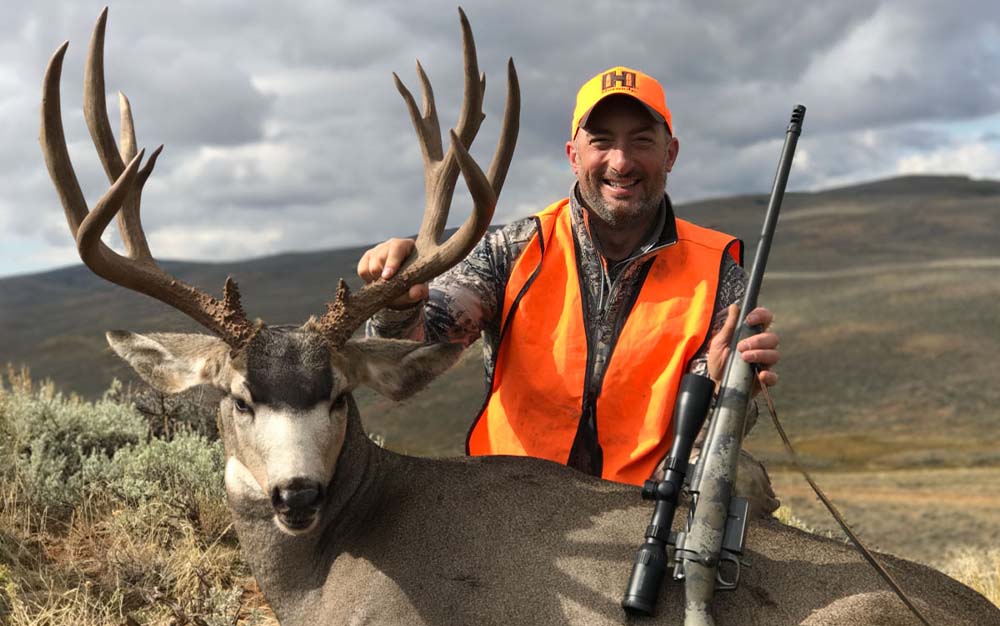
Numbers are one thing. Performance in the field is another. And here, the 6.5 PRC shines as well. I’ve used it with great success on mule deer, whitetails, elk, and moose. Its pinpoint accuracy makes it deadly on these animals to 500 yards and more. It is also a winner as a competition round, especially as a lighter ELR (extreme long range) round on targets out to 2,100 yards.
Even though it is a relative newcomer, in light of its accuracy, shootability, and lethality it has earned its place as one of the best long-range calibers for hunting open country game like mule deer.
Ammo to Consider:
Best for Beginners: 6.5 Creedmoor
Key Features
- Engineered for high-volume shooting in 1,000-yard competitions
Pros
- Excellent accuracy
- Enjoyable to shoot
- Great bullet selection
- Lots of factory ammo options
Cons
- None, but haters are gonna hate
This upstart has been on a tear since its introduction in 2007 and evokes passionate responses—both pro and con—like no other cartridge in recent memory. The haters claim it is over-hyped by the outdoor media (certainly true), that it is inadequate for game larger than deer (false), and that it’s no better than older classic cartridges (also not the case).
Let’s look at the last point, first. If a shooter is looking for nothing better than deer-killing accuracy at 200 yards, then there are plenty of cartridges that fit the bill, and there isn’t anything to argue about. Use whatever you want—whether a .223 Rem., a .45/70, or something in between—and call it Christmas. The deer won’t know the difference.
Where the 6.5 Creedmoor excels is with its engineering. It’s built along the principles of modern cartridge design. That involves shooting ballistically aero-efficient bullets at moderate velocities with the understanding that they will retain their speed and shoot flatter at long distances while generating mild recoil and good barrel life. The engineering of these cartridges, which gets into the minutia of rifle twist (faster), chamber dimensions (tighter), case taper (less), shoulder angle (steeper), throat lede angle (shallower), and other details, is why they are inherently more accurate, and better, than the cartridges of yore.
One needs look no further than how the 6.5 Creedmoor and its kin have fared in precision rifle competitions, winning time and again when the shots are on small targets at 1,000 yards or more. The last time a .270 Win. or .30/06 could make that claim was an age ago.
As for its effectiveness on game, there’s little doubt about its track record there. I have used it on more big game animals than any other cartridge since 2007. That includes numerous elk, and more deer than I can remember. I’ve also used it in Africa on large and small game, including on Giant Eland, the world’s largest antelope that tips the scales at 2,000 pounds. With the right bullet and (as always) good shot placement, the 6.5 Creedmoor hits hard.
It’s moderate recoil, inherent accuracy, and proven lethality is why it is such a great choice for new hunters. Any cartridge that is enjoyable to shoot in a rifle is one a hunter—whether new or experienced—will be more apt to practice with. And that factor alone will make a person a more competent field marksman and a better, more ethical hunter.
Ammo to Consider:
Best for Precision Shooting Matches: 6mm Dasher
Key Features
- Fantastic accuracy pedigree
- Remarkable consistency
Pros
- Easy to reload
- Hyper accurate
- Negligible recoil
Cons
- Requires reloading
- Expensive components
- Some feeding issues
In the world of practical precision rifle competition, exemplified by the NRL, PRS, RTC, and other series, there is an arms race among light-recoiling 6mm cartridges. Many of the contenders are based on the 6mm Benchrest cartridge. That family includes the 6mm BRA, 6mm BRX and 6mm Dasher. Of these the 6mm Dasher is the current champ, in terms of popularity and winning.
The Dasher was the brainchild of benchrest shooters Dan Dowling and Al Ashton (Dasher is a mashup of their names) who developed it in 1999. Over the years the round has set numerous records in 600- and 1,000-yard benchrest competitions, so when the PRS started to catch on in 2012, it wasn’t long before those shooters started looking at this stubby little round.
I shoot a lot of team matches and although I run a 6mm GT (another fine round that has the potential to knock the 6mm Dasher from its perch), my shooting partner runs a 6mm Dasher, so I’ve seen what it can do first-hand.
The key to the Dasher and these other rounds is their consistency. With proper handloading technique, the Dasher delivers muzzle velocities with minimal shot-to-shot SD (standard deviation) and ES (extreme spread). Those predictable velocities mean that shooters can calculate their trajectories at longer ranges with extreme confidence.
Since the velocities tend to be mild (2850 fps is usual) it is also easy for shooters to manage the rifle recoil and spot their hits and misses, which is another key to success in practical rifle competition.

On the downside, the Dasher can be finicky with respect to feeding since it is so short and has a steep 40-degree shoulder. But with some tuning of the magazine that issue can be mostly mitigated.
The other challenge with shooting the Dasher is that you have to handload. Other than some boutique businesses that will load ammo for you, there is currently no factory 6mm Dasher offered, which is a significant barrier to entry for many shooters.
The lack of factory offerings is one reason the 6 GT might overtake the Dasher. Hornady is loading 6 GT ammunition with 109-grain ELD-M bullets that are available through GA Precision. But in the meantime, the Dasher can rightfully claim the title as the best precision rifle cartridge on the market.
5 Dasher Components
Brass:
Bullets:
Most Accurate: .30 Stewart
Key Features
- Purpose-built for benchrest
Pros
Cons
- Specialized niche cartridge
One cartridge needs to be crowned the most accurate and it just happens to be one you’ve probably never heard of. Back in 2013, Mike Stinnett bested a benchrest record that stood for nearly 40 years when he shot a 5-shot group in competition at 100 yards that measured .0077 inches.
To put that in perspective, seven-thousands of an inch is the equivalent thickness of two sheets of paper. Stinnett stacked those bullets so perfectly that the shot-to-shot variance was only detectable by precision calipers.
How do we know all five shots went in that hole? During benchrest competition the targets have a paper backer that is moving placed behind them. Unless that backer has five distinct holes in it—which Stinnett’s did—it doesn’t count.
The cartridge Stinnett used is nearly as surprising as the group he shot. When we think of benchrest, our minds instantly go to the 6 PPC, which has been a dominant cartridge in benchrest since the 1980s. The .30 Stewart, however, is based on the 6.5 Grendel necked up to .30 caliber.
The process of forming the brass is laborious. Stinnett said he would take the 6.5 Grendel brass made by Lapua and run it through a sizing die until the shoulder is pushed back far enough to chamber. He would then fire-form the brass in a barrel dedicated to that process and then run that brass through a die with a .30-caliber mandrel, at which point he turns the case neck for uniformity and trims the brass to the right length. According to Stinnett it takes him eight firings to get the brass to the correct dimensions before it is good to go.
He used .30-caliber BIB 114-grain bullets made by Randy Robinett (loaded over H4198 powder for a 2980 fps muzzle velocity). When loading the cartridges the bullets were only seated .12 inches into the cases. His custom-made barrels had a 1:17 twist.
Needless to say you’re not going to find one of these rifles, or the ammo, on your gun store shelf anytime soon. Esoteric hardly touches on Stinnett’s gear and is part of the reason his record might stand for decades before anyone bests it.
FAQs
Q: What is the most accurate long-range caliber?
The most accurate long-range caliber can’t be reduced to a single answer. The correct response is, for what? For extreme long-range competition there are a host of specialized rounds designed to hit targets placed two miles (or more) from the shooter. But these niche cartridges are expensive (to put it mildly) to shoot and build guns for and aren’t practical for everyday shooters.
For shooting out to 1,000 yards, the 6mm Creedmoor is about ideal. There are plenty of factory guns and ammunition to choose from, and it is an easy cartridge to reload. For hunting at extended ranges, the 6.5 PRC and .300 Win. Mag. are tough to beat.
Q: Is the 5.56 good for long-range shooting?
A few years back I took a very nicely built AR-15 to Buck Doyle’s training facility where a group of us shot out to 1,100 yards on steel targets. When I wrote about the event, many commenters called me a liar for suggesting that a .223 Rem./5.56 NATO could shoot that far. Well, with the right bullets (70 grains and up) and the right barrel twist (1:7 is best), the 5.56 is capable of shooting impressive distances, including the elusive 1,000-yard mark.
Q: What is the most accurate caliber at 500 yards?
Steel placed at 500 yards are the bread-and-butter targets for PRS and NRL competition, so for these applications the pipsqueak 6mms are the best. That includes the 6 Dasher, 6 GT, 6 BRA, and 6 BRX, along with the 6.5mm and 6mm Creedmoors. For hunting it makes more sense to run with something a bit stouter. The 6.5 PRC, 7mm Rem. Mag., and .300 Rem. Mag. are all capable of fine accuracy and game-killing power at these distances.
How to Pick the Best Long Range Caliber
I made my selection of long range calibers based on my experiences hunting, shooting, and competing with these loads. I also took ballistic performance into account, as well as the experiences and results of the top long-range shooters in the world. But to choose the best long-range caliber for you, start with your own experience and interests. There is no one-size-fits all answer when it comes to the best long-range calibers. The intended use and shooter’s budget play a major role in determining which is best. Then there’s the matter of personal preference. Some shooters have an intense disdain for newer cartridges. Fortunately for them, older stalwarts like the .308 Win. and .300 Win. Mag. still possess remarkable capabilities.
For those looking to leverage the latest innovations in cartridge design and bullet technology there is a whole world of goodies to choose from. Soft shooting 6mms give the most bang for the buck when comparing their long-range capabilities with how (relatively) affordable they are to reload. For off-the-shelf accuracy, the 6.5 Creedmoor is tough to top, no matter how much the Creed’s detractors might howl.
Hunters who just want more gun should look to the bigger .30s, like the .300 PRC and .300 Win Mag., especially if their adventures take them into territory where larger predators like bears prowl the landscape.
Why Trust Outdoor Life?
Since 1898, OL has been a leading authority in testing and reviewing hunting gear, fishing tackle, guns and shooting equipment, and much more. We have more than a century-long history of evaluating products, and we’re now bringing that expertise to online reviews. Our editors are experienced outdoorsmen and women, and most importantly, we’re trained journalists. We prioritize field testing and objective data when reviewing products. We conduct interviews with gear manufacturers and engineers as well as outdoor experts so that our readers have an understanding of how and why a product works—or doesn’t.
Advertising does not influence our gear reviews and it never will. While we always focus our coverage on standout products—because we want our readers to be aware of the latest and greatest gear—we also cover the flaws and quirks of any given product.
Final Thoughts
No matter the choice, there’s no denying that we live in a golden era of rifle accuracy. We’ve never had it so good when it comes to picking among the best long-range calibers to shoot. So make your pick wisely, and then get to shooting, because a cartridge can only be as accurate as the one firing it.

